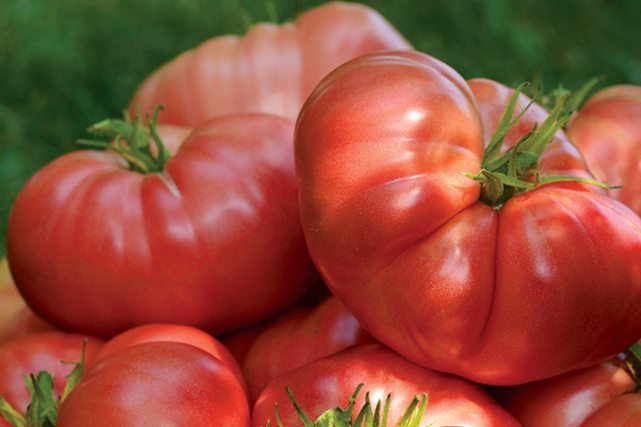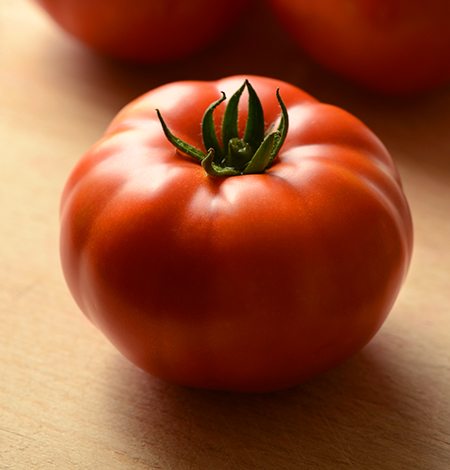Plant breeders in the produce industry aim to help consumers snack healthier.
The heirloom boom that has played out during the past several years in farmers markets and backyard gardens isn’t likely to take over commercial growing operations anytime soon, but seed producers have definitely taken notice. Consumers are turning in droves toward strange-looking fruits and vegetables with exotic-sounding names such as Purple Calabash and Boothby’s Blonde. The reason is simple — flavor.
It’s something that for so many years has been left behind by many of the mass-produced fruits and vegetables on the market.
Flavor has certainly always been a factor, but it hasn’t always been at or near the top of the list for scientists and breeders. “We might breed for disease resistance and fruit that can handle mechanical harvesting … oh, and if it has high sugar content, that’s great, too,” says Kent Bradford, director of the Seed Biotechnology Center at the University of California, Davis. “But as consumer tastes have changed, it’s become clear that you’re going to have to have flavor as well.”
The push has been especially strong in tomatoes. There are hundreds, maybe thousands, of heirloom varieties. They’re high in flavor, but suffer from some of the low yield and disease issues hybrids were bred to address.
“If we can get consumers to be trained to be OK with green-topped tomatoes, we could easily breed that gene back in.”
— Kent Bradford
“When it comes to heirlooms, they get passed down from generation to generation for a reason,” says Josh Kirschenbaum, PanAmerican Seed Company business and product manager for vegetables. “However, if you’ve ever grown an heirloom tomato, it’s a challenge.”
Bradford recalls years ago when he was introduced to Brandywine, a popular heirloom tomato. Bradford was talking with a tomato scientist who commented that he had a great plant: “No fruit, but a great plant,” the scientist said.
PanAmerican’s answer is “heirloom marriages.” Three of those tomato seeds were introduced last year and will hit catalogs for 2015.
Genuwine is a cross of Costoluto Genovese and Brandywine; Big Brandy is a cross of Big Dwarf and Brandywine; and Perfect Flame is a cross of Peron and Flamme.
Heirloom marriages are hybrids, which could be an issue for heirloom purists. But Kirschenbaum says the hybrid vigor that comes with them should be attractive to growers who need more than a few tomatoes off a plant taking up so much space in a garden or field.
“You’ll still get all the unique flavors and colors and shapes,” Kirschenbaum says. “It’s a nice way to have all those same heirloom characteristics with the benefits that hybrids bring.”
As popular as heirlooms have become, the aforementioned production issues will keep them from being mass produced in the near future. But that won’t keep commercial growers from pushing for better flavors.
Bradford says breeders and scientists are hard at work to bring flavor to the mass-produced, as well. Researchers at UC-Davis in the past two years identified a gene in tomatoes that boosts sugar content, and thus flavor. That gene also gives the fruit “green shoulders,” dark green tops that are undesirable for many consumers. “If we can get consumers to be trained to be OK with green-topped tomatoes, we could easily breed that gene back in,” Bradford says.
That might sound easier said than done, but Bradford says other fruits and vegetables can follow the trend seen with apples.
Red Delicious is one of the most widely grown apples in the United States because its deep red color and unblemished skin make it visually appealing. Its thick skin also makes it easy to store for long periods. But Red Delicious has been roundly criticized for its lack of flavor. Consumers are starting to reject Red Delicious, and the apple industry has responded with more flavorful apples. Now, Bradford says, consumers are picking up alternatives that look and store well, but have better flavor, such as Fuji and Pink Lady.
“As consumers gradually expect more, the market will respond,” Bradford says. The genomic revolution of the past 20 years or so has made it easier to develop new varieties that meet the needs of growers and
merchants. Those tools will do the same for flavor, but Bradford says there is still work to be done to understand how to get to the flavors consumers demand.
For instance, Bradford says it’s been considered common knowledge that a honeydew melon needs to reach 12 percent to 14 percent sugar content before it can be marketed and accepted by consumers. But that level of sugar, according to recent research, has almost nothing to do with making a honeydew desirable to consumers.
While flavor is certainly front and center, there are other characteristics playing a part in seed production today. Syngenta, for example, is putting an emphasis on snacking fruits and vegetables. In the past few years, Syngenta has introduced Sweet Baby Broccoli, and Kumato and Sweetelle tomatoes — all developed with not only flavor, but also aesthetics in mind.
Sean Knapp, head of Syngenta vegetable seeds product marketing, says that cherry tomatoes are the most visible effort in the snacking arena. They’re visually attractive and come packed with flavor.
Melons, on the other hand, take some work — unless they’re cut and packed into cartons in stores. But those melons have short shelf lives once they get home, and they suffer from something known in the fruit industry as “purge.”
“Sometimes a consumer purchases a container of freshly cut watermelon and gets home to find they’ve got a container with an inch of water and a little bit of melon in it,” Knapp says.
Syngenta’s new varieties aim to address those issues. The Dynamic line of cantaloupe, Knapp says, has a longer shelf life, adding as much as one to two weeks to the fruit. And the Crisp Delight watermelon, he says, has less purge, retaining more of the juices for a more desirable product when cut and packaged.
“These new varieties are attractive to look at, and they have nice flavor like you expect in a melon,” Knapp says.
Those seeds are being licensed to growers and the produce should be hitting stores in 2015 and 2016, Knapp says.











